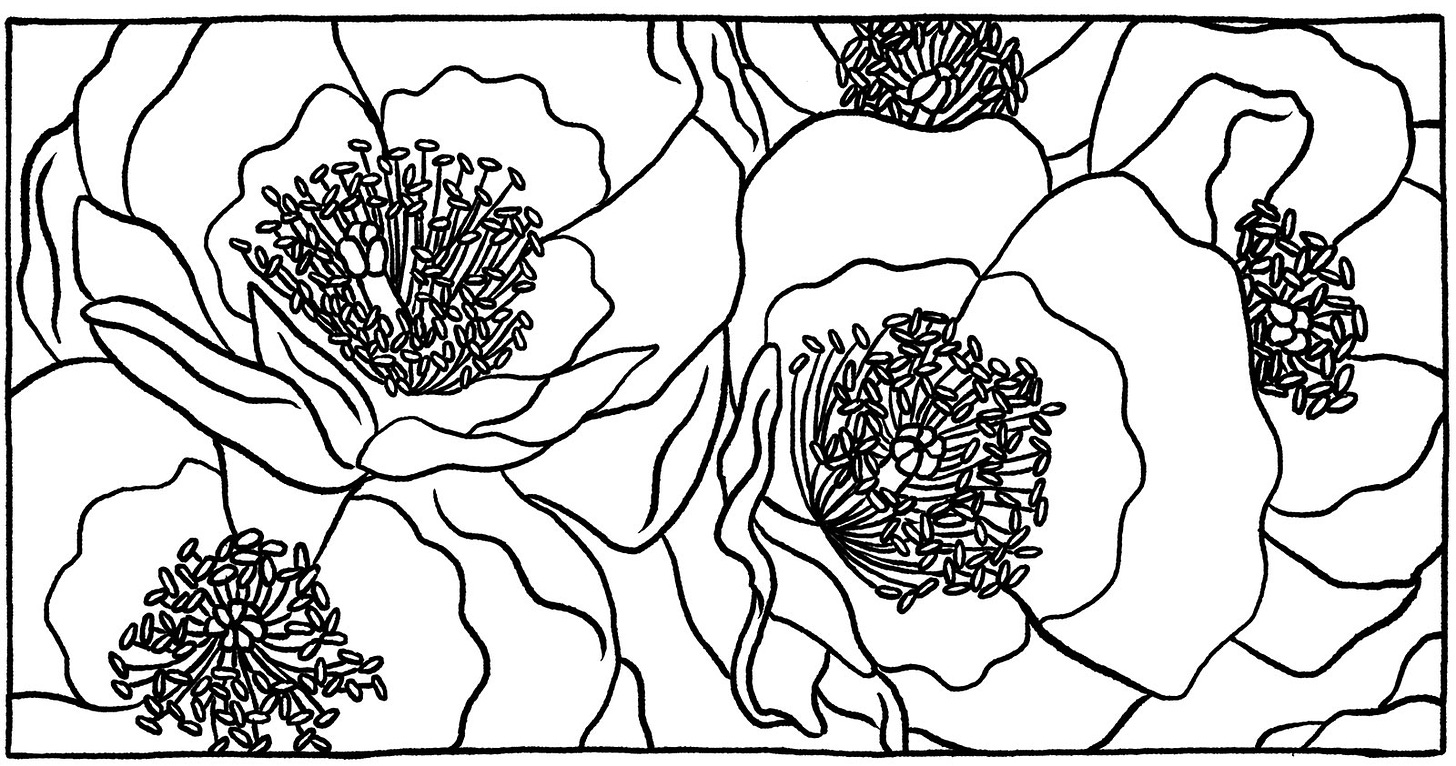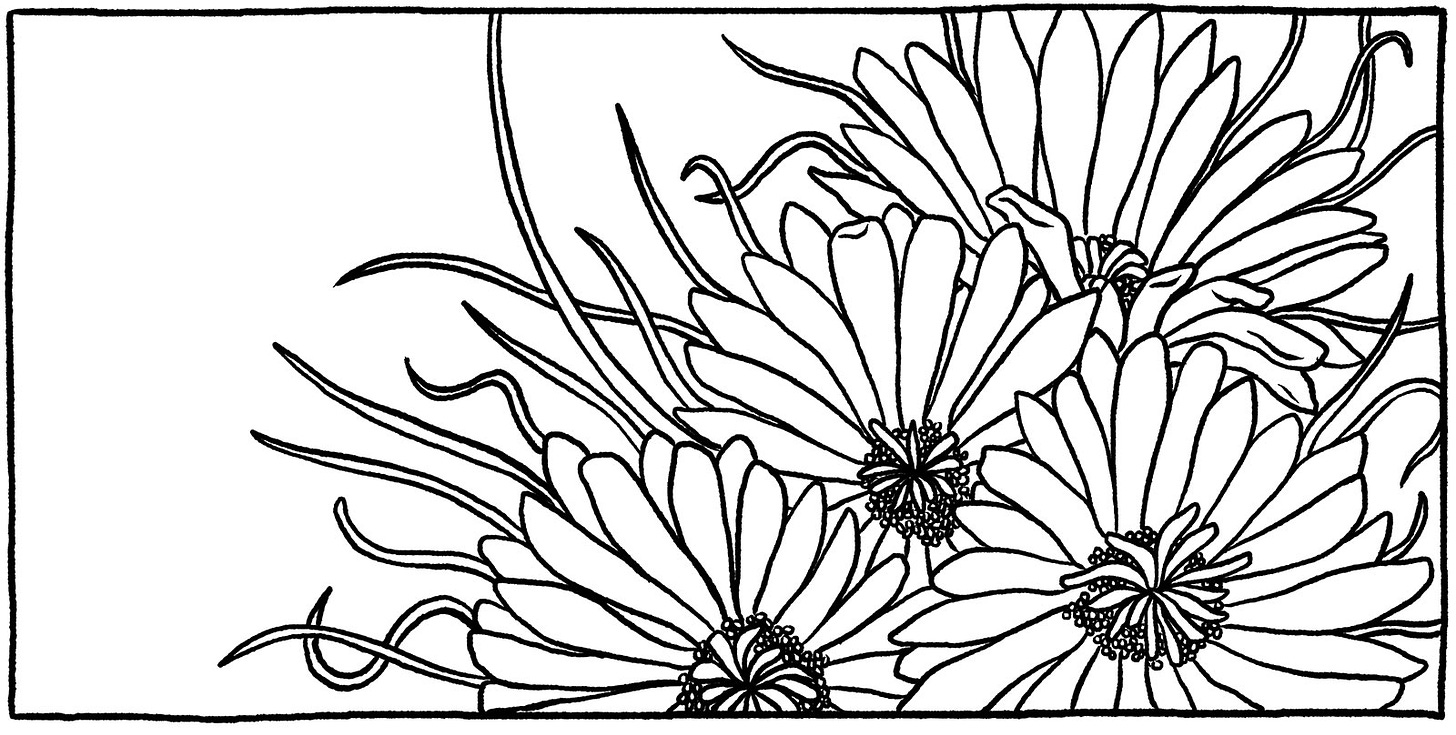Happy 2023, everyone! I thought we might begin this brand new year by talking about momentum, or what Donna Freitas calls “blowjobs on page two.” (You’re welcome.)1
Momentum is the force that keeps an object in motion—or for our purposes: the devices used by writers to keep readers turning the page. After drafting scenes and trying to understand the heart of my memoir-in-progress, A Brief History of My Affairs, I’m now cutting and pasting and rearranging it all to tell the story in the most page-turning way possible.2
Let’s address the elephant in the room. If memoir is rooted in truth, is it honest to reorganize time and sometimes even space to tell a good story? Well, facts should be upheld, relevant omissions should be explained, and inventions should be clear—but think of a book like a conversation with someone you really like. When sharing anecdotes from your life: you’d be truthful and entertaining. Facts are facts, but you can arrange those facts in the most interesting order. For instance, if I were talking about a hiking trip, I might begin, “Did I tell you about the time I almost died after drinking frog water?”3 When reordering events, the key is to be open about what you’re doing.
Even though it’s against my better judgment to share a possible opening of my book on the internet, whatever. Here’s an example of two ways I might open the story. Version One is from an early draft of the manuscript; Version Two is from a later draft. In Version One, I changed the name of the city I lived in for grad school.4
Version One: Chronological Order.
In 2008, I arrived in Cactus Needle in the dead of night, weighed down by an enormous backpack that held the lion’s share of my worldly belongings. Standing at the gated entrance to graduate student housing, my skin crackled with all I’d left behind. At twenty-four, I’d abandoned a crowded apartment in New York, a job at a tech company, an ex-boyfriend, my entire family, my home. The future was suddenly wide open. In a new city, chasing after a new life, the hairs on the back of my neck stood on end. This was what I lived for. The thrill of the new, of the slate wiped totally clean.
Version Two: Flash Forward / Flash Back.
Indianapolis, December 2020. On the floor of my office, I clung to myself and rocked gently back and forth. Mazzy Star’s Blue Flower sounded softly in my earbuds. Waiting on a sign from you. I hadn’t listened to the song in years, or the mixed-CD it had been burned onto, a gift from the married man I’d been in love with nearly a decade earlier. The silence that followed our affair had nearly destroyed me and I’d bottled up the memory in order to survive. Now, the past had slammed into me like a wall, demanding to be reckoned with.
In diagram form:
Version One: Scene > Summarized Flash Back
Version Two: Scene > Secret > Reflection
In Version One, the language is fine but the reader has no idea why the story is being told. It feels almost like a travel narrative: girl goes to grad school in a new city.5 In Version Two, the story starts in the middle of a crisis and the secret is shared upfront so the reader knows the stakes, and—ideally—keeps turning the page.
Book structure and plot devices can help a writer achieve momentum, even in memoir. Here are a few ways to shape a story:
Time Pressure
A finite period of time like a pregnancy, a graduation, a marriage, etc. can create a sense of urgency within the story while giving the reader a known end point. E.g. The Year of Magical Thinking (Didion), An Exact Replica of a Figment of My Imagination (McCracken), Lost & Found (Schulz)An Investigation
Asking a question upfront and searching for the answer draws readers into the mystery, and engages them in your fact-finding mission. E.g. Five Days Gone (Cumming), In Cold Blood (Capote), Inheritance (Shapiro)Flash Forward / Flash Back
Sometimes, a reader can be hooked with a spicy flash forward, or a meaningful flash back. Mary Karr calls this her “template” for memoir: flash forward followed by chronological account.
E.g. Lit (Karr), The Light of the World (Alexander), Memorial Drive (Trethaway), The Rules Do Not Apply (Levy)A Journey
A travel narrative immediately conjures a question of arrival: will the author make it to her destination? And how will she be transformed by the journey? E.g. French Milk (Knisley), Wild (Strayed), Eat, Pray, Love (Sorry/Not Sorry), Into Thin Air (Krakauer), Between Two Kingdoms (Jaouad)
Right now, A Brief History of My Affairs is an investigation (what happened and how should I feel about it) folded into a ticking clock (pregnancy).
Next up, I travel back to the city where a decade ago shit hit the fan for me, and see how it feels. XO.6
Here’s the essay. And I’d be remiss if I didn’t mention that my beloved husband Christian showed me this essay, and talked to me at length about momentum while I was working on my first book. Many of the thoughts in this newsletter are based on those conversations. But we’re married so his thoughts are my thoughts, just like his money is my money. Mwuahahaha.
While also still drafting scenes, which I will apparently be doing until the end of time.
Let me begin by saying that this was a very long time ago and I was a teenager and my brain had not fully formed. I’d been hiking in Glen Canyon and ran out of water. When I got to the top of the canyon wall, the only water I could find had a dead frog floating in it. I drank it…and OBVIOUSLY Montezuma’s Revenge hit me the next day.
I feel certain that Christian would want you to know that he came up with the name Cactus Needle. <3
Like Emily in Paris…erm…Margi in Cactus Needle? Which, no shade to Emily. I lived vicariously through seasons one, two, and three. Will she and Gabriel finally get together? Will that ruin the show? I DON’T KNOW.
These flowers are random cactus flowers because…Cactus Needle. Also, nothing else was working for me this week. So, yeah.






Fab post! You're always so funny and smart about storytelling!